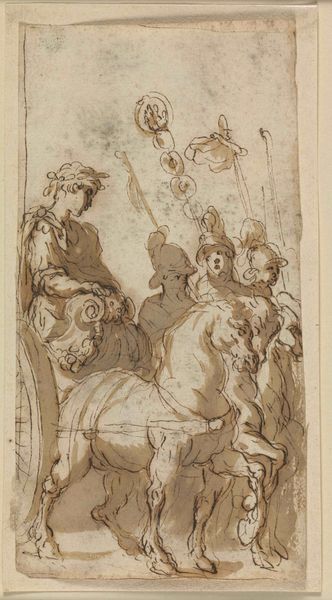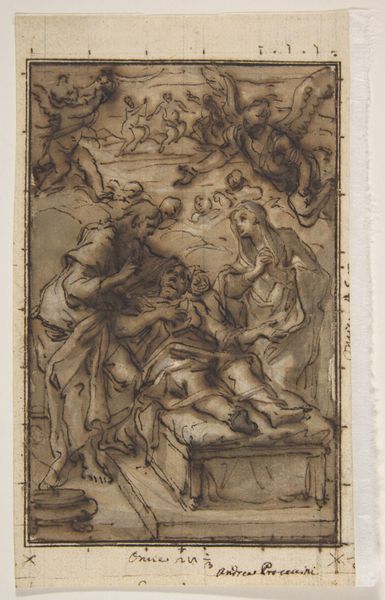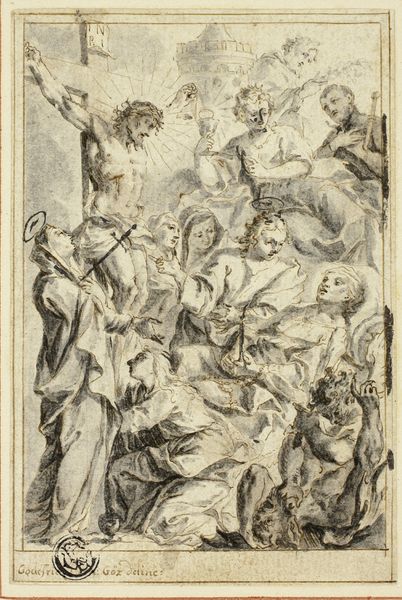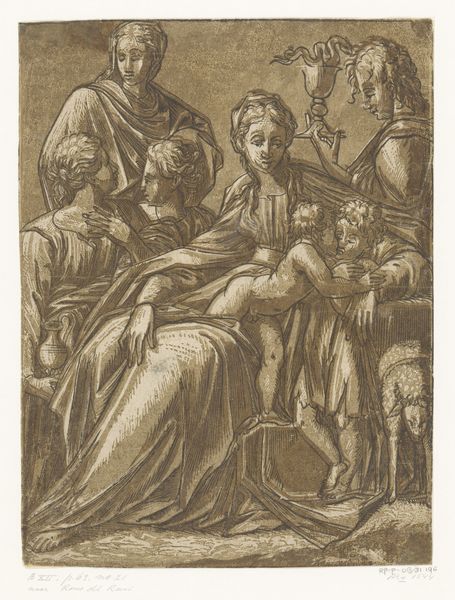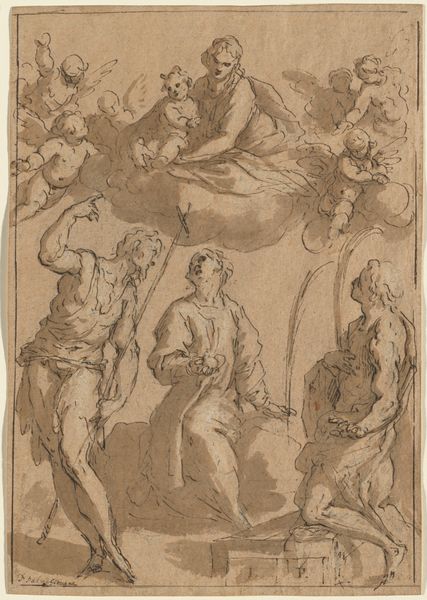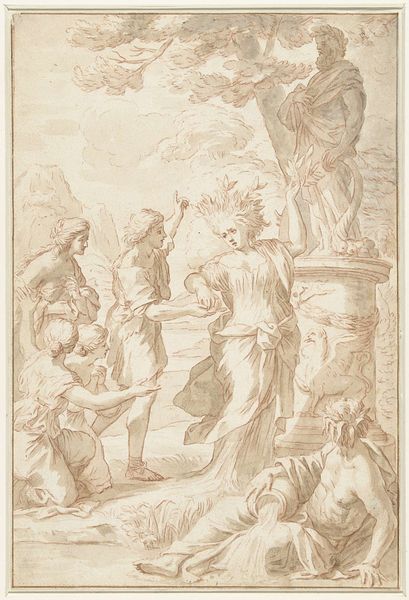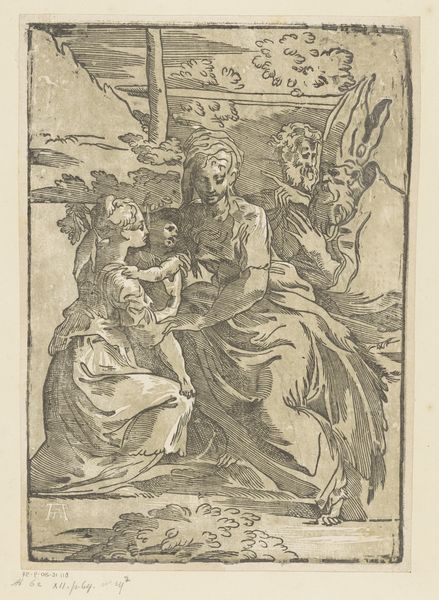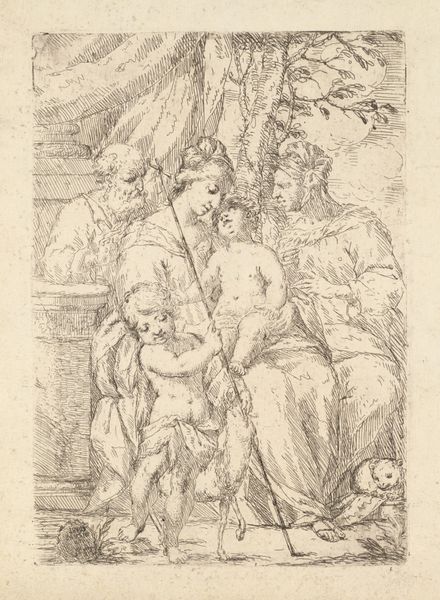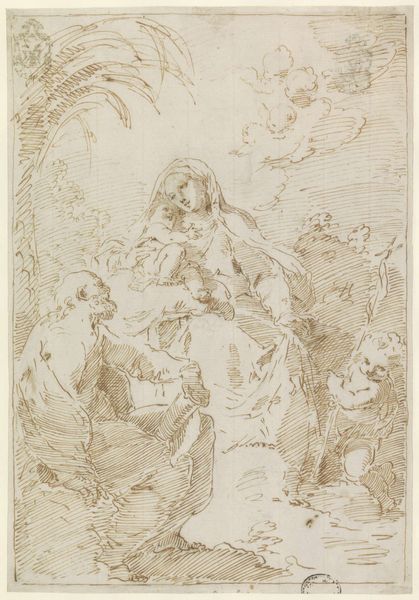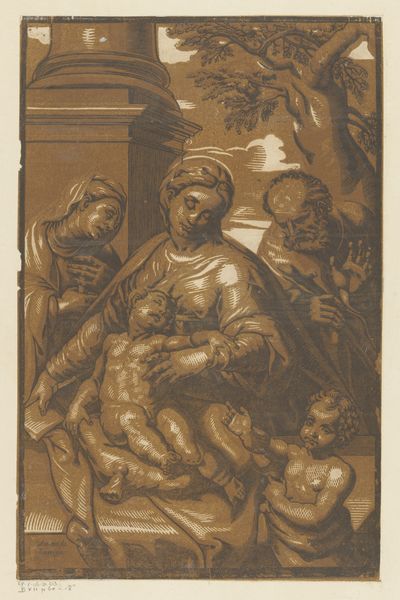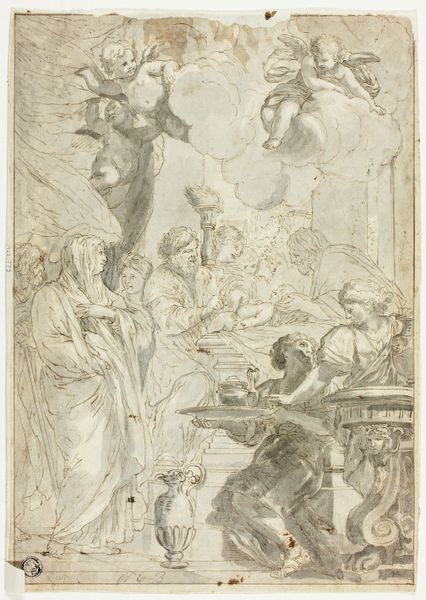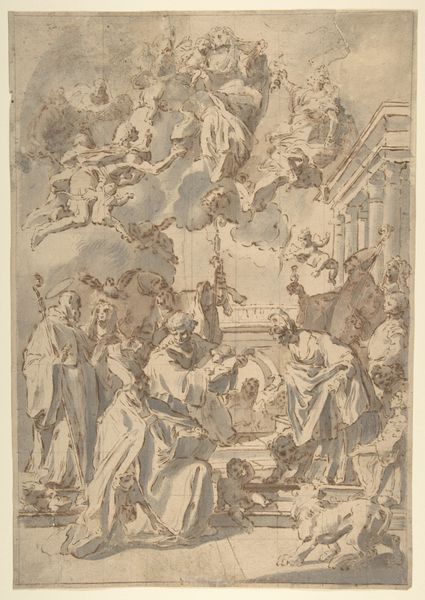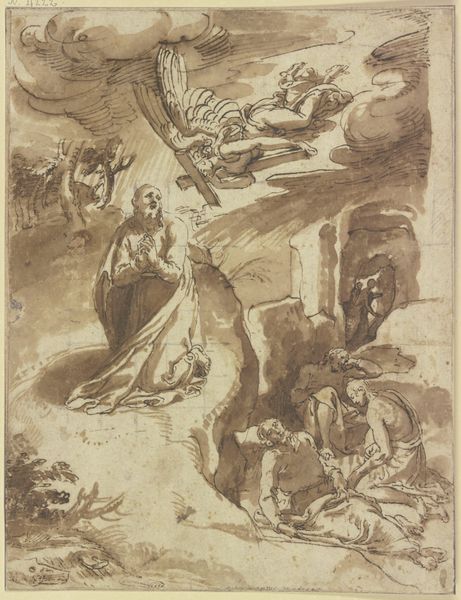
The Martyrdom of Saint Lucy (Her Last Communion before Being Dragged by Oxen) 1556 - 1630
0:00
0:00
drawing, ink
#
drawing
#
narrative-art
#
ink painting
#
figuration
#
ink
#
italian-renaissance
Dimensions: 10 7/16 x 5 11/16in. (26.5 x 14.4cm)
Copyright: Public Domain
Editor: This drawing, "The Martyrdom of Saint Lucy (Her Last Communion before Being Dragged by Oxen)," was created by Giovanni Battista Maganza il Giovane sometime between 1556 and 1630. It’s rendered in ink, and seeing it now, I’m struck by the contrast between the chaotic scene on the ground and the serenity depicted above. What formal elements do you find most compelling in this piece? Curator: The composition immediately presents a tension rooted in its spatial organization. Notice how the earthly plane, teeming with figures and implied movement, is horizontally oriented, providing a wide stage for the narrative. Above, the divine realm is vertically stacked, a soaring space that seems to defy gravity through layered cloud forms. It's the contrast of directionality and implied volume that directs our eye, wouldn't you agree? Editor: That makes sense. The upper scene feels lighter because of that verticality and the clouds, in comparison to the crowd below pressing in on Saint Lucy. Curator: Precisely. And how does the artist utilize line to create these impressions of weight and space? The hatching and cross-hatching in the lower register, as well as the strong, dark ink outlines contribute to the heavier feel, versus the more flowing lines above. Consider also the architectural lines; they lead our eyes deliberately upward, reinforcing the spiritual ascent implicit in the subject. Do you find a similar pattern present elsewhere? Editor: I think so. The lines around the saint herself seem softer than those of her executioners. Is that intentional, to separate her? Curator: Indeed. Her positioning and illumination, set against the darker shapes around her, signify her detachment from earthly matters. In essence, we're observing the translation of spiritual concept into visual structure. What effect does that have on you as the viewer? Editor: I never noticed the artist's strategic deployment of space, directionality, and form. I can now see the structural components that support the emotional resonance this drawing holds. Curator: A structural examination of artistic production can give a new awareness of aesthetic intent.
Comments
No comments
Be the first to comment and join the conversation on the ultimate creative platform.
